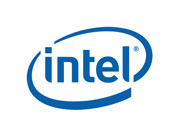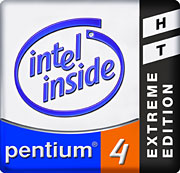Intel's Core Duo Launch - Notebook Performance Revealed
by Anand Lal Shimpi on January 5, 2006 8:00 PM EST- Posted in
- Laptops
It seems almost anti-climactic, given how much we’ve seen of Intel’s new Centrino platform and not to mention that we’ve already been able to benchmark the new Core Duo CPU. Believe it or not, despite the months of leaks of new logos and pre-NDA benchmarks, today is the official launch of Intel’s Centrino Duo platform. Or another way of looking at it: today is Yonah’s public birthday.
We were so excited about Yonah when we first heard about it, but now that we already know so much is there anything more worth talking about? And is there even anything more worth getting excited about? We already know it’s going to be called the Core Duo, we already know about Intel’s Leap ahead slogan and we’ve heard the word platform from Intel more times in the past year than we’ve heard in the past decade. Is this even an article worth doing?
As if you didn’t already know the answer to that rhetorical question, we should at least point out one thing. In our previous articles we looked at Yonah very similar to a fish out of water, we compared a very fast, very cool running, low power mobile processor to a bunch of desktop alternatives. We used it to give us a clue into future desktop performance from Intel, but it was what we didn’t do that makes this article today so very important. What we didn’t do with Yonah was stick it in a notebook and see how it fares in its natural habitat. And that’s what we’re here for today.
Today’s article is very much a look at Yonah and Centrino Duo as they were intended to be viewed - as members of a mobile society. The primary point of comparison here today will be Dothan and the previous generation Centrino. While we would like to compare to AMD’s Turion 64, we only had a very limited time with the notebooks in this review and we could not get a Turion 64 notebook given the short notice and time constraints. The other point worth mentioning is that the Turion 64 vs. Yonah comparison will be a lot more fair and make a lot more sense when AMD releases their dual core Turion later this quarter.
As we mentioned above, not only is today the official launch of Intel’s Centrino Duo platform, it is the official unveiling of Intel’s new logo and slogan - Leap ahead.
We’ll save all criticisms of the Viiv brand and Leap ahead for you the readers, but here are the new logos:


And for old time's sake, here's the old logo in use:

The new slogan is supposed to signify Intel’s shift away from focusing “inside” and starting to look at platforms and solutions for the end users.
With that out of the way, it’s time to look at what Intel’s Israel team has been working on for the past couple of years.










29 Comments
View All Comments
Shark Tek - Thursday, January 5, 2006 - link
Lets hope that AMD release Turion's X2 with a even more reduced power consumption and DDR2 support that will be really "Sweet".Se imaginan un Turion64 X2 o un Core Duo combinado con un x1800 Mobility Radeon eso seria la combinacion perfecta para 'Lan Parties'. Sin la necesidad de andar con equipo pesado.
==============================================================================
Can you imagine a notebook with Turion X2 or Core Duo matched with a X1800 Mobility Radeon. That will be the perfect combination for Lan-Parties. Without the need for carrying heavy parts from your Desktop @ home.
Just imagine that ....
coldpower27 - Thursday, January 5, 2006 - link
Very impressive.monsoon - Thursday, January 5, 2006 - link
yeah, me too i'm curious about the Apple products coming with Yonah, and how they stack up to X2 athlons PC Yonah notebooks......and overclocking !!!
PS - BTW did you try to overclock the ASUS Yonah notebook ?
PeteRoy - Thursday, January 5, 2006 - link
noDoormat - Thursday, January 5, 2006 - link
Page loads took forever but the review was interesting.I'm still interested to see what Apple does with these chips in their iBooks next week.
The battery life of the T60 was impressive - 227 minutes for DVD playback. Finally, I can watch an LOTR episode on one battery!
The release of only 1 single core chip speaks volumes - intel is ditching single core chips when they can. They want to push dual core hard.
Calin - Friday, January 6, 2006 - link
In DVD playback the DVD unit consume some of the power... I wonder if playing a DVD from a virtual drive or from a network would prolong battery lifeFuren - Thursday, January 5, 2006 - link
Very lovely power consumption. I suppose power consumption will be a bit higher when both cores are at 100% usage but most of us dont keep our CPU usage pegged at 100% when using a notebook and specially not if we care about power consumption at all. It'd be nice if Intel had decided to go to 90nm on the chipsets but I suppose their power consumption is not that high to begin with and Intel needs a use for its 130nm fabs...Calin - Friday, January 6, 2006 - link
off course the power consumption will be higher with both cores at 100% usage - but in this case the "work per watt" is greater, as processors don't use all the power in the system.Just that people would prefer a laptop that consume a battery charge faster but finish the work much faster than the other way around.
cheburashka - Thursday, January 5, 2006 - link
Intel's chipset shortage problem is because all current MCH's are still on 130nm, which is maxed out in the fabs. They would love to get the 90nm Broadwater/Crestline chips out the door to free up 130nm capacity to build low end parts again.